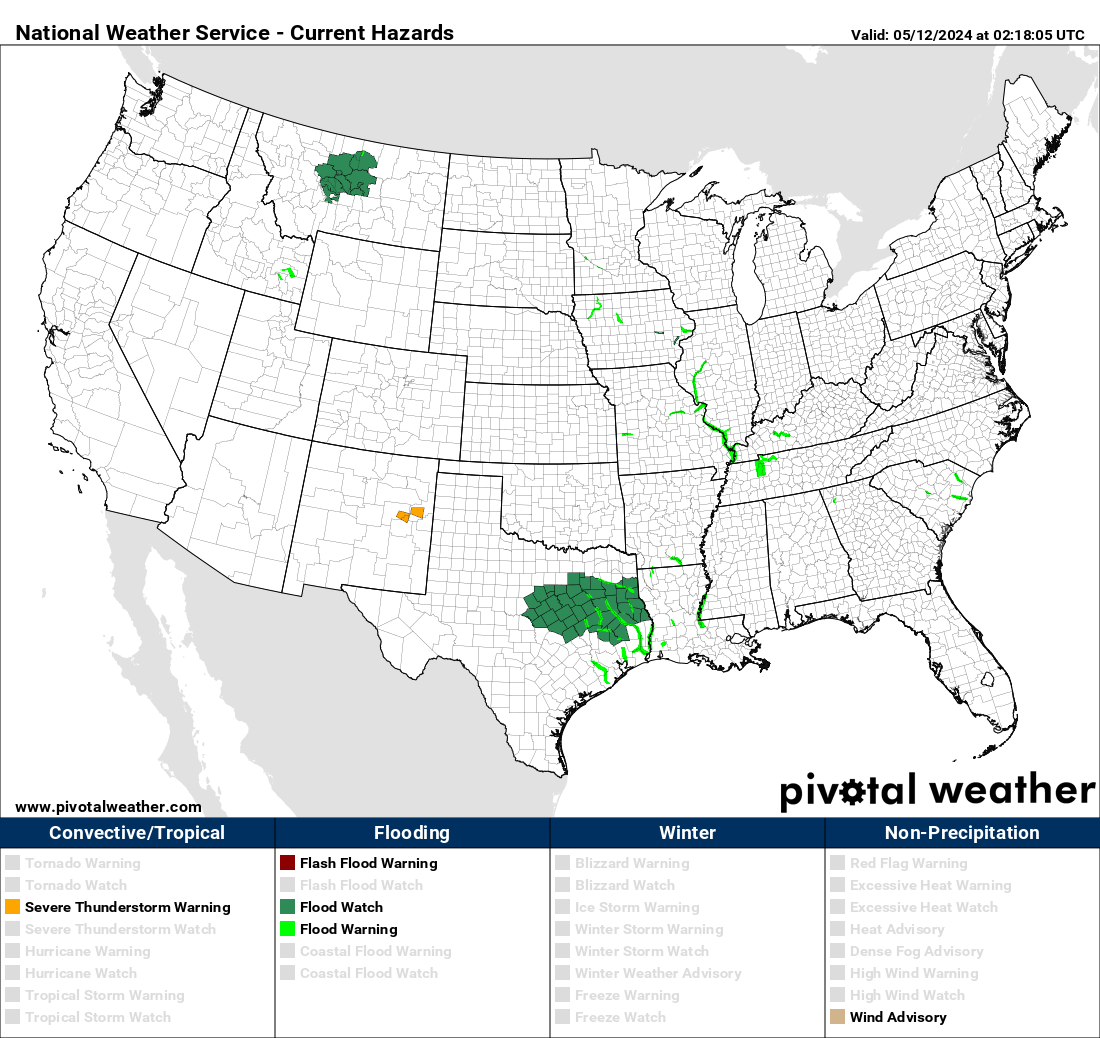Post by safeharbor on Jan 21, 2008 19:38:25 GMT -6
A friend sent this to me. She's on a bunch of different pet forums and such. I haven't checked it through snopes or anything but she's usually very thorough with those things.
Last week, I wrote an article about lead toxicity. I had just seen a cat in my practice with lead toxicity secondary to paint dust and chip exposure during home renovations. This is a very common method of lead toxicity in cats and dogs. Lead based paint is sanded causing dust which gets on the paws and fur of cats and dogs or chips fall the ground which dogs ingest.
After that email, got hundreds of emails asking... what about toys and bowls? What is safe? Should you be concerned? Is it just paint that can cause lead toxicity? How about toys made in china?
This past fall, there were a series of recalls involving over 1.5 million Fisher-Price children's toys made in china with lead based. I asked one of our wonderful PetPlace writers to research this topic and I'll share some of that information with you now. I'll try to answer some of the most common questions that I got.
Is Lead Toxic?
Yes. Lead is a metal that can be toxic. Old paint contained lead and the paint, paint chips and paint dust from homes being renovated are a possible source of lead that can cause lead toxicity. This was a problem in paints produced prior to 1977 contain high lead levels. The paint is perfectly safe while it's on the walls, but once you start s c r a p i n g and disturbing the paint, you may have a problem. Some companies are still using it to paint children's and pet products.
What are Common Signs of Lead Poisoning?
Common signs of lead poisoning may include vomiting and diarrhea that may progress to symptoms that involves the nervous system such as seizures or abnormal behavior. Lead toxicity can also cause anemia which can cause lethargy and weakness. Hundreds of pets are poisoned each year. For more information about the exposure to lead, diagnosis and treatment of lead poisoning, go to www.petplace.com and read about Lead toxicity in Dogs.
Does Anyone Test Animal Toys to Determine Safety?
The Consumer Product Safety Commission (CPSC) checks the safety of all toys intended for humans. Unfortunately, there are no organizations regularly testing animal toys, and there are no federal standards regarding lead in pet toys. The CPSC enforces a federal standard for lead in paint on children's toys. This standard is 600 parts per million (ppm).
Are Pet Toys Toxic?
In the wake of the lead scare, two laboratories have conducted independent tests on randomly selected pet items. These very qualified laboratories include Trace Laboratories, Inc. in Illinois and ExperTox Analytical Laboratories in Texas. Both labs **have** found lead and other toxic heavy metals in pet items purchased from American stores.
ExperTox Analytical Laboratories tested a Chinese-made, Wal-Mart marketed cat toy and dog toy. Both were packaged in a clear plastic wrapping with a cardboard label and no brand name.
The dog toy, a latex, green monster, contained high levels of lead and chromium (a cancer-causing heavy metal) and smaller amounts of other toxic materials. The cat toy contained very high levels of the toxic heavy metal, cadmium.
The lab determined these toxins were easily accessed and could be acquired from the toy with a simple lick of the dog's or cat's tongue.
Trace Laboratories tested Paws ‘N Claws tennis balls purchased at a dollar-type store. They found an astounding 27,200 ppm lead levels in the ink on the balls. They also tested a ceramic food dish and found lead levels at 2,890 ppm. The lead levels in both these items far exceeded the limit set for human toys.
Should You Be Concerned?
There are conflicting opinions regarding the severity of these levels of lead and other heavy metals in pet products. Because of the lack of federal regulation at this time, it is up to you, the pet owner, to determine your level of concern.
An interesting bit of information to consider: Wal-Mart actually recalled children's toys which are quite similar to their lead-containing pet toys. These Chinese-made, Wal-Mart children's toys are sold at a similar price, without a brand, in packaging very similar to that containing their toxic pet toys. If these toys are not safe enough for your children, should your pet be playing with them?
What Can You Do?
How can you protect your pet? Talk to your veterinarian. Do your research. Check with the manufacturers of your pet's toys; ask for proof of their safety testing. Strongly consider discarding your pet's current products which are made in China. When buying new products, look for items made in the United States. Also, avoid toys made of latex, as they are more likely to contain lead. Above all, be proactive and don't take chances with the health of your pet.
Last week, I wrote an article about lead toxicity. I had just seen a cat in my practice with lead toxicity secondary to paint dust and chip exposure during home renovations. This is a very common method of lead toxicity in cats and dogs. Lead based paint is sanded causing dust which gets on the paws and fur of cats and dogs or chips fall the ground which dogs ingest.
After that email, got hundreds of emails asking... what about toys and bowls? What is safe? Should you be concerned? Is it just paint that can cause lead toxicity? How about toys made in china?
This past fall, there were a series of recalls involving over 1.5 million Fisher-Price children's toys made in china with lead based. I asked one of our wonderful PetPlace writers to research this topic and I'll share some of that information with you now. I'll try to answer some of the most common questions that I got.
Is Lead Toxic?
Yes. Lead is a metal that can be toxic. Old paint contained lead and the paint, paint chips and paint dust from homes being renovated are a possible source of lead that can cause lead toxicity. This was a problem in paints produced prior to 1977 contain high lead levels. The paint is perfectly safe while it's on the walls, but once you start s c r a p i n g and disturbing the paint, you may have a problem. Some companies are still using it to paint children's and pet products.
What are Common Signs of Lead Poisoning?
Common signs of lead poisoning may include vomiting and diarrhea that may progress to symptoms that involves the nervous system such as seizures or abnormal behavior. Lead toxicity can also cause anemia which can cause lethargy and weakness. Hundreds of pets are poisoned each year. For more information about the exposure to lead, diagnosis and treatment of lead poisoning, go to www.petplace.com and read about Lead toxicity in Dogs.
Does Anyone Test Animal Toys to Determine Safety?
The Consumer Product Safety Commission (CPSC) checks the safety of all toys intended for humans. Unfortunately, there are no organizations regularly testing animal toys, and there are no federal standards regarding lead in pet toys. The CPSC enforces a federal standard for lead in paint on children's toys. This standard is 600 parts per million (ppm).
Are Pet Toys Toxic?
In the wake of the lead scare, two laboratories have conducted independent tests on randomly selected pet items. These very qualified laboratories include Trace Laboratories, Inc. in Illinois and ExperTox Analytical Laboratories in Texas. Both labs **have** found lead and other toxic heavy metals in pet items purchased from American stores.
ExperTox Analytical Laboratories tested a Chinese-made, Wal-Mart marketed cat toy and dog toy. Both were packaged in a clear plastic wrapping with a cardboard label and no brand name.
The dog toy, a latex, green monster, contained high levels of lead and chromium (a cancer-causing heavy metal) and smaller amounts of other toxic materials. The cat toy contained very high levels of the toxic heavy metal, cadmium.
The lab determined these toxins were easily accessed and could be acquired from the toy with a simple lick of the dog's or cat's tongue.
Trace Laboratories tested Paws ‘N Claws tennis balls purchased at a dollar-type store. They found an astounding 27,200 ppm lead levels in the ink on the balls. They also tested a ceramic food dish and found lead levels at 2,890 ppm. The lead levels in both these items far exceeded the limit set for human toys.
Should You Be Concerned?
There are conflicting opinions regarding the severity of these levels of lead and other heavy metals in pet products. Because of the lack of federal regulation at this time, it is up to you, the pet owner, to determine your level of concern.
An interesting bit of information to consider: Wal-Mart actually recalled children's toys which are quite similar to their lead-containing pet toys. These Chinese-made, Wal-Mart children's toys are sold at a similar price, without a brand, in packaging very similar to that containing their toxic pet toys. If these toys are not safe enough for your children, should your pet be playing with them?
What Can You Do?
How can you protect your pet? Talk to your veterinarian. Do your research. Check with the manufacturers of your pet's toys; ask for proof of their safety testing. Strongly consider discarding your pet's current products which are made in China. When buying new products, look for items made in the United States. Also, avoid toys made of latex, as they are more likely to contain lead. Above all, be proactive and don't take chances with the health of your pet.














